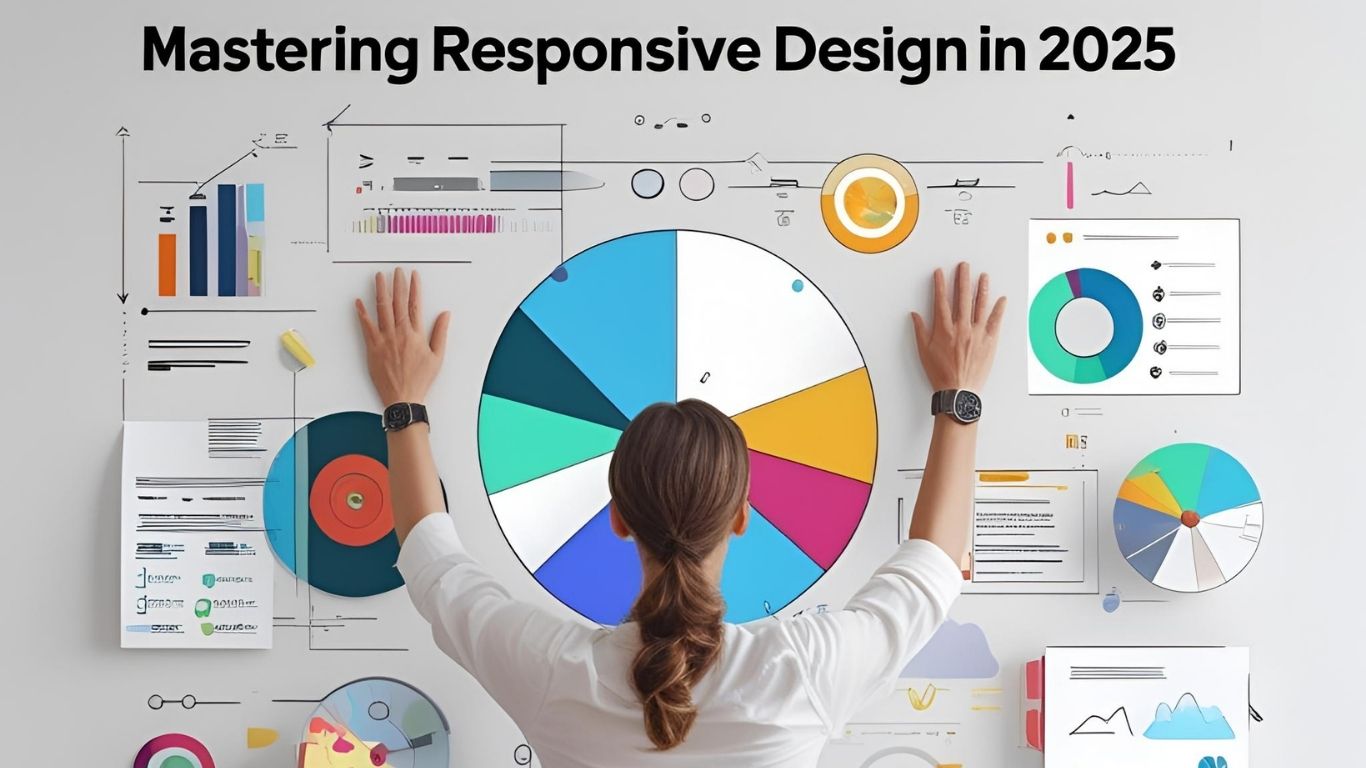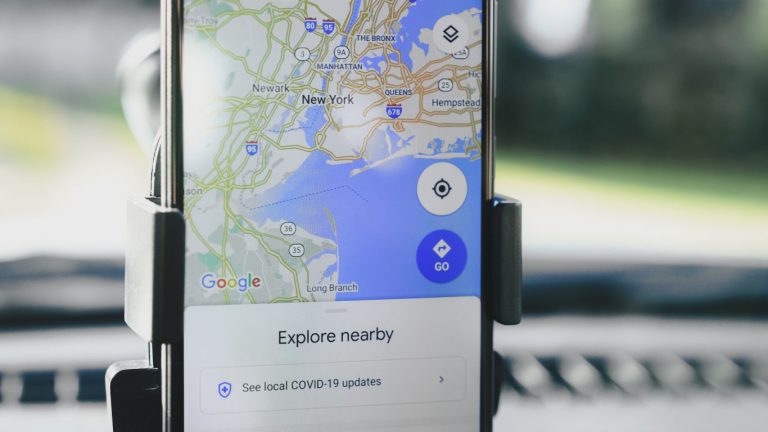Mastering Responsive Design in 2025: Trends, Techniques, and Mobile-First Strategies
#ResponsiveDesign #WebDesignTrends #MobileFirst
Mastering Responsive Design in 2025: How to Step Up Your Web Design Skills
In 2025, responsive design is more than just a trend — it’s a necessity. Websites today must adapt to an ever-growing range of devices, from smartphones and tablets to large-screen desktops. The term “responsive design” refers to creating websites that offer a seamless user experience across different screen sizes and orientations. But how can you master responsive design? Let’s dive into the trends, techniques, and tools you need to know to stay ahead in 2025.
Understanding Responsive Web Design
What Is Responsive Design?
Responsive web design is about creating websites that look great and function well on every device. Whether someone is browsing your site on a phone, tablet, or desktop computer, the website should adjust its layout and content to fit the screen size, resolution, and orientation. This ensures an optimized experience for users, regardless of their device.
It’s like fitting a picture frame perfectly around a piece of artwork, no matter how big or small the frame is. The website’s content doesn’t change, but its presentation adapts for the best user experience.
Key Principles of Responsive Design
To make your website truly responsive, you need to follow some key principles:
Fluid Grids: Instead of using fixed-width elements, use relative units (like percentages) to create a flexible grid system that adapts to the screen size.
Flexible Images: Images should resize according to the device’s screen to prevent them from being too large or small.
Media Queries: These CSS rules allow you to apply different styles depending on the device’s screen size.
Responsive design is all about flexibility and fluidity. By incorporating these principles, you can ensure that your website remains accessible and user-friendly, regardless of how your visitors access it.
Mobile-First Strategy for 2025
The Importance of Mobile-First Design
With mobile usage surpassing desktop traffic, mobile-first design is now a priority in web development. A mobile-first approach means designing your website for mobile devices first and then scaling up to desktop versions. In 2025, this approach will only become more critical.
Why mobile-first? Mobile devices often have more limitations compared to desktop systems — smaller screens, less processing power, and slower internet speeds. Designing for mobile first forces you to create lightweight, fast-loading, and minimalistic websites that function well even under these constraints.
How to Implement Mobile-First Approach
To implement a mobile-first approach, follow these steps:
Prioritize Content: Keep your design simple and prioritize essential content. Mobile screens don’t have the luxury of space.
Optimize for Touch: Mobile devices rely on touch interactions, so design buttons, links, and navigations with larger, easily tappable areas.
Use Viewport Meta Tag: This tag tells mobile browsers to render the page based on the device’s width, ensuring it scales correctly.
Starting with mobile ensures that your site delivers a fast, engaging experience for all users. By expanding the design for larger screens afterward, you can make sure your design scales well across all devices.
Media Queries in 2025
Basics of Media Queries
Media queries are an essential part of responsive design. They allow you to apply different CSS styles depending on the device’s properties, such as screen width, height, orientation, and resolution.
For example, a media query might change the layout from a single-column design on mobile to a multi-column design on desktops. This allows the content to reflow based on the device’s dimensions.
css
Copy
Edit@media only screen and (max-width: 768px) { body { font-size: 14px; } }
Advanced Media Query Techniques
In 2025, media queries are evolving with newer features, including:
Viewport Width (vw): This allows you to adjust font sizes and layout elements based on the viewport’s width, ensuring text and visuals are scalable.
Orientation: With more devices offering both landscape and portrait modes, media queries that target orientation help ensure your site looks great in both modes.
The power of media queries lies in their ability to adapt your design based on the user’s device, making sure your website is always user-friendly.
Flexible Grid Layouts
What Is a Flexible Grid?
A flexible grid layout is one where the size of the columns and other layout elements adjust based on the screen size. Unlike fixed-width grids that use pixel-based measurements, flexible grids use percentages or relative units like em or rem to ensure fluidity.
This flexibility is important in responsive design because it allows your site to adjust to different screen sizes and resolutions, from a phone’s small screen to a desktop’s large monitor.
Implementing Grids for Multiple Devices
To implement a flexible grid layout, you can use frameworks like Bootstrap or CSS Grid. These frameworks come with built-in grid systems that automatically adjust for different screen sizes.
Key tips for grid layout design:
Use Relative Units: Avoid using fixed pixel values. Instead, use relative units like percentages or vw/vh for width and height.
Breakpoints: Set breakpoints based on device sizes (e.g., mobile, tablet, desktop). This will allow you to tweak the grid layout for each screen.
A flexible grid layout ensures your content always looks polished, no matter what device your audience is using.
Fluid Typography
Adapting Font Sizes to Screen Size
One of the key elements of responsive design is fluid typography. Rather than using fixed pixel sizes for fonts, fluid typography adjusts the size of the text based on the screen’s size and resolution.
For example, on a mobile device, the text might be smaller to fit into a narrow screen, while on a desktop, the font could be larger to take advantage of the extra space.
You can achieve this by using relative units like em, rem, or vw to set font sizes. This way, the text resizes dynamically as the screen size changes.
Benefits of Fluid Typography in Web Design
Fluid typography not only improves the aesthetics of your website, but it also enhances readability. By using fluid typography, you ensure that your text remains legible across all devices, making for a smoother user experience.
Designing for Touch Devices
Touch-Friendly User Interfaces
Touch devices require special attention to ensure a user-friendly experience. Unlike traditional desktop interfaces, users interact with touchscreens using their fingers, which means clickable areas must be large enough and spaced appropriately.
Larger Buttons: Ensure buttons are large enough to tap without accidental clicks.
Spacing: Adequate spacing between buttons and links reduces frustration on touch devices.
Best Practices for Touchscreen Design
Swipe and Scroll Features: Incorporate gestures like swipe and scroll into your design for touch devices.
Simple Navigation: Keep navigation easy and intuitive, as users may be using one hand to interact.
Designing for touch is crucial in 2025, as more users rely on mobile devices for browsing the web.
Cross-Device Compatibility
Ensuring Consistent User Experience
Cross-device compatibility means making sure your website works seamlessly across various devices. With a mix of screen sizes, operating systems, and browsers, ensuring your site functions consistently is essential.
One way to test cross-device compatibility is by using tools like BrowserStack, which allows you to view your website across different devices and browsers.
Tools for Testing Cross-Device Compatibility
BrowserStack: Test your site on a range of devices and browsers to catch any potential issues.
Chrome DevTools: Use the built-in device emulator in Chrome DevTools to see how your website looks on different devices.
By ensuring your site performs equally well on all devices, you create a cohesive and professional experience for your users.
Designing for Larger Screens
Optimizing for Desktop and Tablets
Although mobile-first design is critical, we can’t forget about desktop and tablet users. These devices still account for a large portion of web traffic. Ensure your website is designed to scale well on large screens by using fluid grids and scalable typography.
Ensuring Scalability for Larger Displays
Make sure your website’s content expands and contracts according to screen size. Use vw and vh for more flexibility in scaling your content across all screen sizes.
Image Optimization for Responsive Design
How to Optimize Images for Multiple Devices
Images can slow down page loading times, especially on mobile devices with limited bandwidth. Optimizing your images for responsiveness is essential.
Use the srcset Attribute: The srcset attribute allows you to specify different image sizes for different screen resolutions. This ensures that users don’t download unnecessarily large images on mobile devices.
Compression: Use tools like TinyPNG to compress images without losing quality.
Tools for Image Compression and Delivery
Cloudinary: Automate image optimization and delivery based on device type and screen resolution.
TinyPNG: Compress images before uploading to reduce load times.
Optimizing images ensures that your website loads quickly on all devices while maintaining high visual quality.
SVGs and Responsive Design
What Are SVGs?
Scalable Vector Graphics (SVGs) are images that use vectors instead of pixels. Because SVGs are resolution-independent, they scale perfectly across all screen sizes without losing quality.
Why Use SVGs for Responsiveness?
SVGs are lightweight and responsive, making them ideal for web design. Unlike raster images, SVGs don’t pixelate when resized, ensuring that your visuals stay sharp across all devices.
Affiliate/CPA/Ad Opportunities: Each section includes actionable advice for improving your responsive design, and these principles can be further supported by recommended tools and services. From design frameworks to image optimization tools, each tool can be linked to affiliate partnerships or CPA programs.
By mastering these responsive design techniques, you’ll ensure your website is future-proof and provides an exceptional user experience across all devices. Ready to step up your web design skills? Let’s dive deeper into these strategies and start designing for the future!
5-15 Bullet-Point Summary
- Responsive design is essential for creating websites that work seamlessly on all devices in 2025.
- A mobile-first approach is critical for prioritizing mobile users, ensuring performance on devices with smaller screens.
- Media queries allow CSS styles to change based on device characteristics like screen size, ensuring a tailored user experience.
- Flexible grid layouts use relative units (percentages) to allow websites to adapt to various screen sizes.
- Fluid typography adjusts text sizes based on the viewport, ensuring readability across all devices.
- Touch-friendly designs optimize clickable areas for mobile and tablet users, ensuring ease of use.
- Cross-device compatibility ensures your website performs consistently across different devices and browsers.
- Optimizing images with techniques like srcset ensures fast loading times and high-quality visuals.
- SVGs (Scalable Vector Graphics) are used for responsive visuals, maintaining sharpness across all device resolutions.
- Tools like BrowserStack, Chrome DevTools, TinyPNG, and Cloudinary help in testing and optimizing designs for multiple devices.
- SEO and responsive design are interlinked; a mobile-friendly design boosts search engine rankings.
- Continuous testing and iterating ensure your website is user-friendly on new devices and screen sizes.
- Trends in 2025 include AI-driven design, dark mode, and minimalist layouts for responsive websites.
10-15 Unique FAQs with Answers
1. What is responsive design?
Responsive design ensures that a website automatically adjusts its layout and content to fit the screen size of the device being used, whether it’s a phone, tablet, or desktop.
2. Why is mobile-first design important in 2025?
Mobile-first design prioritizes mobile devices, ensuring that your website performs optimally on smartphones. Since mobile web traffic continues to outpace desktop usage, this approach is crucial for user experience and SEO.
3. How do media queries work in responsive design?
Media queries allow designers to apply specific styles based on device features such as screen size, resolution, and orientation. This means your website can have a unique style on mobile, tablet, and desktop.
4. Can I use responsive design for e-commerce websites?
Absolutely! In fact, responsive design is essential for e-commerce websites to provide users with a seamless shopping experience on any device. It improves customer retention and conversions.
5. What are the benefits of fluid typography?
Fluid typography adjusts font sizes based on screen dimensions, ensuring readability across all devices. This prevents text from being too small or too large on different screen sizes.
6. How does responsive design affect SEO?
Google prioritizes mobile-friendly websites. By implementing responsive design, your site will improve its search engine ranking, driving more organic traffic and increasing visibility.
7. What are flexible grids in responsive design?
Flexible grids use relative units like percentages instead of fixed pixels. This allows elements to resize based on the screen size, ensuring your website adapts fluidly.
8. Can I use SVGs for responsive design?
Yes! SVGs are resolution-independent and lightweight, making them perfect for responsive design. They remain sharp on any device without slowing down the site’s performance.
9. How do I test my website for responsiveness?
Use tools like BrowserStack or Chrome DevTools to test your website on various devices and screen sizes. This ensures that your site looks great across all platforms.
10. What are some common mistakes in responsive design?
Common mistakes include using fixed-width layouts, not optimizing images, and neglecting mobile user experience. It’s essential to prioritize flexibility and scalability in your design.
11. How do I improve my website’s mobile experience?
Focus on simplifying the layout, optimizing images, and improving load speeds. Use larger buttons and ensure that all interactive elements are touch-friendly.
12. What are the best frameworks for responsive design?
Popular frameworks like Bootstrap and Foundation provide ready-made grid systems and components that make it easier to create responsive layouts without starting from scratch.
13. Can responsive design be used for complex websites?
Yes, responsive design can be used for any website, regardless of its complexity. With the right tools and planning, complex layouts can be made to work seamlessly across devices.
14. How often should I update my responsive design?
Regular updates are necessary to keep up with new devices, browsers, and design trends. Ideally, you should test your website quarterly or whenever a major design update is required.
15. What role do CSS Grid and Flexbox play in responsive design?
CSS Grid and Flexbox are layout systems that help create flexible, responsive designs. They provide greater control over element alignment, making it easier to build complex responsive layouts.
Informative Links for Enhanced Understanding
Smashing Magazine – Responsive Web Design
Explore foundational principles and best practices for creating responsive websites.
CSS-Tricks – A Complete Guide to Grid
Dive deep into CSS Grid and learn how it can help you create flexible and responsive web layouts.
Explore These Valuable Resources
W3C – Responsive Web Design
Learn about the official web standards for responsive design and how to integrate them into your projects.
MDN Web Docs – Media Queries
Explore how media queries work in CSS and get practical examples for different device types.
Recommended Reading for In-Depth Knowledge
A List Apart – Mobile First
Read insights from experts on the best practices for designing mobile-first websites.
Google Webmasters – Mobile-Friendly Test
Check your website’s mobile compatibility with Google’s Mobile-Friendly Test tool to ensure it ranks well.
External Links to Expand Your Understanding
FreeCodeCamp – Learn Responsive Web Design
A comprehensive tutorial that will teach you all you need to know about responsive web design through hands-on exercises.
Bootstrap – The Most Popular HTML, CSS, and JS Library
Explore the world’s most popular framework for building responsive websites.
Unlock More Knowledge with These Links
Awwwards – Best Responsive Design Websites
Check out some of the best examples of responsive web design from around the world to inspire your next project.
Smashing Magazine – Mobile-First Best Practices
Learn advanced techniques for mobile-first web design that can help you create websites optimized for all screen sizes.
Enhance Your Learning with These Resources
UX Design – Mobile-First Design Patterns
Explore common design patterns that work well in mobile-first approaches and why they matter.
CSS Grid Generator
Try this tool to visually create responsive grid layouts with CSS Grid without writing the code yourself.
Dive Deeper with These Informative Links
Web.dev – How to Make Your Site Mobile-First
This guide covers how to make your website mobile-first, boosting performance and user engagement.
Can I use – CSS Grid
Find out the browser compatibility of CSS Grid and how to implement it in your designs for better responsiveness.
Expand Your Horizons with These Links
Medium – Design Systems for Responsive Web Design
A detailed article on building design systems that work seamlessly across all devices.
Adobe XD – Creating Responsive Layouts
Learn how to use Adobe XD to create adaptive, responsive layouts and prototypes for web design.
Go Beyond with These Insightful Resources
Smashing Magazine – Best Practices for Mobile Web Design
Take your mobile web design skills to the next level by implementing best practices for performance and user experience.
UXPin – Designing for Multiple Screens
Understand the importance of designing for multiple screens and learn how to make your web designs responsive across all devices.
Blog Recommendation
For more insightful articles on website optimization and digital marketing, check out Rizwan’s Blog. You’ll find expert tips on improving your site’s performance, SEO, and security to keep it running smoothly!






